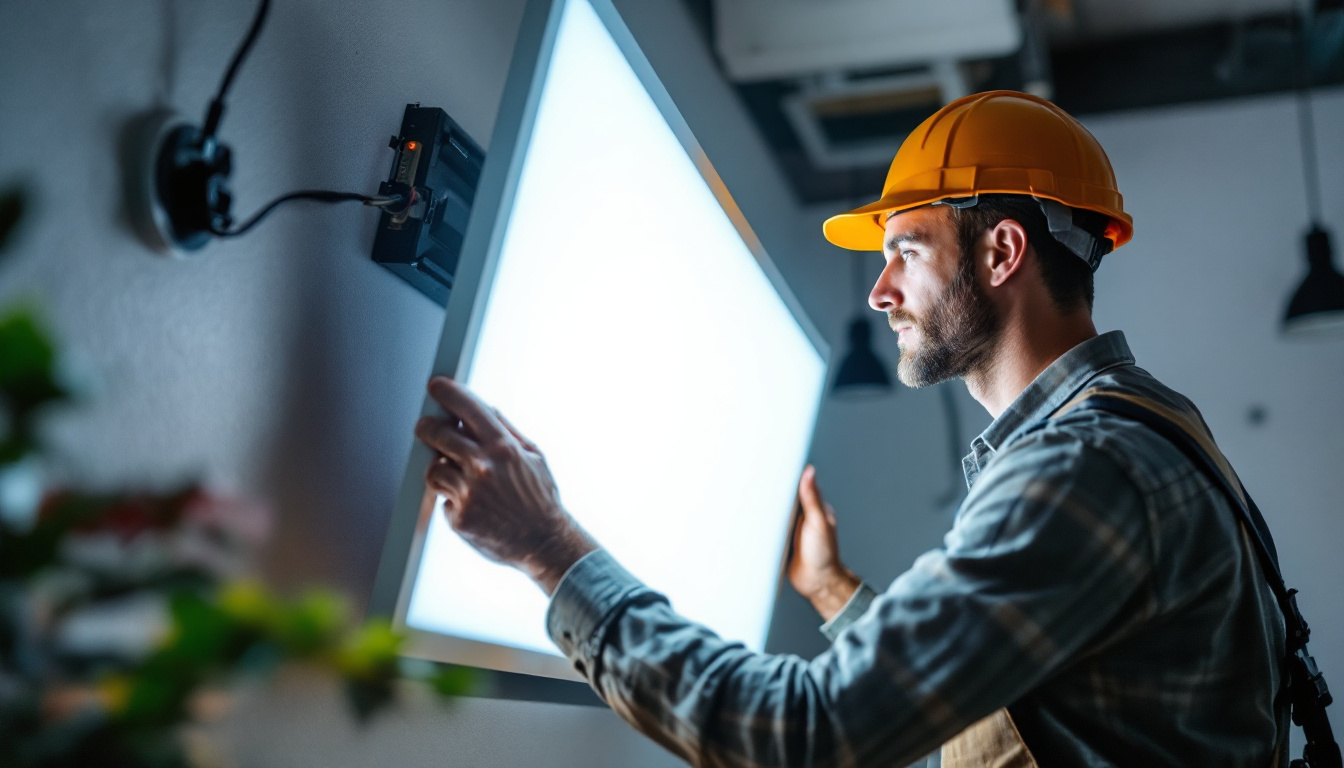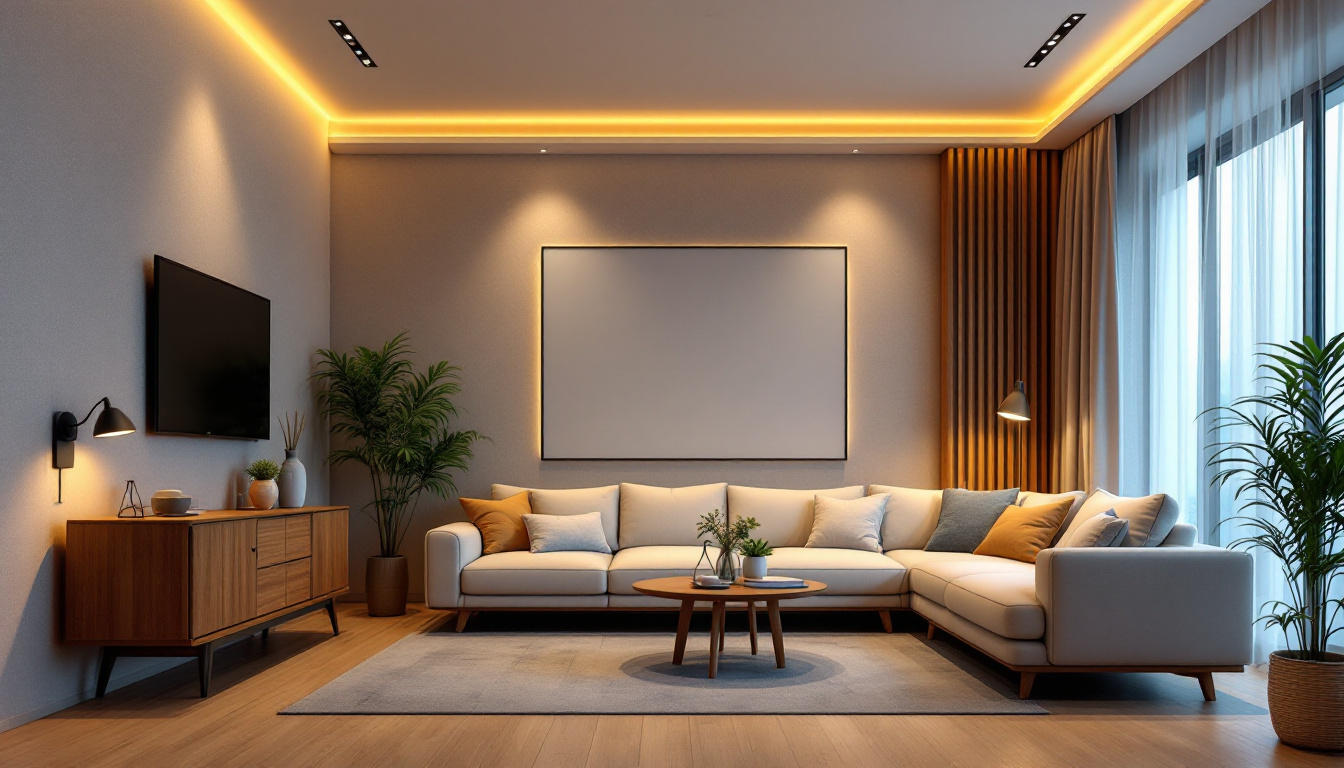

In the evolving landscape of lighting technology, LED flat panel lights have emerged as a game-changer for both residential and commercial applications. Their sleek design, energy efficiency, and versatility make them a popular choice among lighting contractors. However, mastering the art of integrating these lights into various projects requires a deep understanding of their features, installation techniques, and the unique needs of clients. This article provides essential tips for lighting contractors looking to excel in the use of LED flat panel lights.
Before diving into installation techniques and project considerations, it’s crucial to understand what LED flat panel lights are and how they function. These fixtures are designed to provide uniform illumination while maintaining a low profile, making them ideal for a variety of settings.
LED flat panel lights are thin, rectangular fixtures that utilize light-emitting diodes (LEDs) as their light source. They are typically housed in a lightweight frame and can be installed in ceilings, walls, or as standalone fixtures. Their design allows for a wide distribution of light, reducing shadows and enhancing visibility in any space. This makes them particularly beneficial in environments where clarity and focus are paramount, such as in conference rooms or classrooms where detailed work is often performed.
One of the primary advantages of LED flat panel lights is their energy efficiency. Compared to traditional fluorescent or incandescent lights, LEDs consume significantly less power, leading to lower electricity bills for clients. Additionally, they have a longer lifespan, which reduces maintenance costs and the frequency of replacements. This longevity is particularly advantageous in commercial settings, where the cost of frequent bulb changes can add up quickly.
Another benefit is their aesthetic appeal. The slim profile of flat panel lights allows for seamless integration into modern architectural designs, providing a clean and contemporary look. This versatility makes them suitable for various applications, including offices, schools, hospitals, and retail spaces. Moreover, many LED flat panel lights come with adjustable color temperatures, allowing users to customize the ambiance of a room. For instance, cooler temperatures can enhance alertness and productivity in workspaces, while warmer tones can create a more relaxed atmosphere in lounges or waiting areas.
Furthermore, LED flat panel lights are often designed with advanced features such as dimming capabilities and smart technology integration. This means they can be controlled remotely via smartphones or smart home systems, allowing for greater flexibility in lighting management. Such features not only contribute to energy savings but also enhance user experience by enabling tailored lighting scenarios that cater to specific activities or moods. As a result, these lights are increasingly becoming a preferred choice for both residential and commercial applications, reflecting a growing trend towards smart and sustainable lighting solutions.
Proper installation is key to maximizing the performance of LED flat panel lights. Lighting contractors must be well-versed in various installation methods to ensure that clients receive optimal results.
LED flat panel lights can be mounted in several ways, including recessed, surface-mounted, and suspended. The choice of mounting method depends on the specific requirements of the project and the preferences of the client.
Recessed mounting is ideal for creating a clean, integrated look, while surface mounting is often preferred in spaces with exposed ceilings. Suspended mounting can add a stylish element to a room, particularly in commercial settings. Understanding the pros and cons of each method will help contractors make informed decisions that align with their clients’ needs.
Moreover, the aesthetic appeal of the chosen mounting method can significantly influence the overall ambiance of a space. For instance, recessed lighting can create a seamless ceiling effect, making a room feel more spacious and modern. In contrast, surface-mounted fixtures can serve as decorative elements, showcasing unique designs that complement the interior decor. Suspended lights, often seen in trendy cafes or offices, can also provide an opportunity for creative expression, with various shapes and materials available to suit different design themes.
Electrical considerations are paramount when installing LED flat panel lights. Contractors should ensure that the existing wiring meets the power requirements of the fixtures. It’s essential to follow local electrical codes and regulations to guarantee safety and compliance.
Additionally, using the appropriate drivers is crucial for the performance of LED lights. The driver acts as a power supply, converting the incoming voltage to the correct level required by the LEDs. Selecting the right driver will enhance the longevity and efficiency of the lighting system.
Furthermore, it is important to consider the layout of the electrical system during installation. Properly planning the circuit layout can prevent overloads and ensure even distribution of light throughout the space. Contractors should also take into account the potential for future upgrades or changes in lighting needs, which may require additional circuits or modifications to the existing wiring. This foresight can save time and resources down the line, making the installation process smoother and more efficient.
The layout of LED flat panel lights can significantly impact the functionality and aesthetics of a space. Lighting contractors must consider several factors when designing lighting layouts for their projects.
Before determining the layout, contractors should assess the specific needs of the space. This includes understanding the purpose of the room, the activities that will take place, and the desired ambiance. For instance, a conference room may require brighter lighting for presentations, while a lounge area may benefit from softer, more subdued lighting.
Measuring the dimensions of the space is also essential. This will help in calculating the number of fixtures needed and their placement to ensure even light distribution. Utilizing lighting design software can assist in visualizing the layout before installation.
Achieving the right balance of light levels is crucial for creating a comfortable environment. Overly bright spaces can cause glare and discomfort, while insufficient lighting can lead to safety hazards and decreased productivity.
Contractors should consider the color temperature of the LEDs as well. Warmer tones (around 2700K to 3000K) are often preferred for residential settings, while cooler tones (4000K to 5000K) are more suitable for commercial spaces. Understanding these nuances will help contractors create effective lighting solutions tailored to their clients’ preferences.
As energy efficiency becomes increasingly important in the construction and renovation sectors, lighting contractors must prioritize sustainable practices when using LED flat panel lights.
LED flat panel lights are inherently energy-efficient, but contractors can enhance these savings through smart design and installation practices. Utilizing occupancy sensors and dimmers can further reduce energy consumption by ensuring lights are only used when needed.
Educating clients about the long-term cost savings associated with LED lighting can also help in promoting energy-efficient solutions. Highlighting the reduced maintenance costs and longer lifespan of LEDs compared to traditional lighting options can make a compelling case for their adoption.
As the use of LED lighting continues to grow, so does the importance of responsible disposal and recycling practices. Contractors should stay informed about local regulations regarding the disposal of LED fixtures and components.
Encouraging clients to recycle old lighting fixtures and educating them about the environmental benefits of LED technology can foster a culture of sustainability. Providing information on recycling programs can also enhance the contractor-client relationship by demonstrating a commitment to environmental responsibility.
Effective communication with clients is vital for the success of any lighting project. Lighting contractors should prioritize educating clients about the benefits and features of LED flat panel lights.
When discussing LED flat panel lights with clients, it’s essential to set realistic expectations regarding performance and aesthetics. Providing samples or mock-ups can help clients visualize the final outcome, ensuring that they are satisfied with the proposed solutions.
Contractors should also discuss the installation timeline and any potential disruptions to the client’s daily activities. Transparency in communication fosters trust and leads to a smoother project experience.
Once the project is complete, contractors should offer guidance on maintaining LED flat panel lights. Educating clients about the importance of regular cleaning and inspection can help prolong the lifespan of the fixtures.
Providing a maintenance schedule or checklist can also be beneficial, ensuring that clients understand how to keep their lighting systems in optimal condition. This proactive approach can enhance client satisfaction and lead to repeat business in the future.
The lighting industry is constantly evolving, with new technologies and trends emerging regularly. Lighting contractors must stay informed to remain competitive and provide the best solutions for their clients.
Participating in workshops, seminars, and online courses can help contractors stay updated on the latest advancements in LED technology and lighting design. Many manufacturers offer training programs that cover installation techniques, product features, and energy efficiency practices.
Networking with other professionals in the industry can also provide valuable insights and foster collaboration. Joining industry associations or attending trade shows can open doors to new opportunities and resources.
As smart technology continues to gain traction, integrating smart lighting solutions into projects can set contractors apart from the competition. LED flat panel lights can be paired with smart controls, allowing clients to adjust brightness, color temperature, and scheduling through mobile apps or voice commands.
Understanding how to implement these technologies effectively can enhance the value of the services offered and meet the growing demand for smart home and building solutions.
LED flat panel lights are revolutionizing the lighting industry, offering energy-efficient, aesthetically pleasing solutions for various applications. For lighting contractors, mastering the installation, design, and maintenance of these fixtures is essential for delivering exceptional results to clients.
By understanding the features of LED flat panel lights, employing effective installation techniques, and prioritizing client education, contractors can elevate their services and build lasting relationships with clients. Staying informed about industry trends and embracing innovative technologies will further enhance their expertise and competitive edge in the ever-evolving lighting market.
Ready to take your lighting projects to the next level with LED flat panel lights? At LumenWholesale, we provide lighting contractors with the highest quality, spec-grade lighting products at unbeatable wholesale prices. Say goodbye to local distributor markups and hello to our extensive selection that meets rigorous industry standards. With free shipping on bulk orders, you can stock up on reliable, high-performance lighting without the hidden fees. Elevate your service offerings with the perfect blend of quality, affordability, and convenience. Discover the best value in wholesale lighting by visiting LumenWholesale today.

Discover the essential insights every lighting contractor needs to know about fluorescent lighting.

Discover essential best practices for lighting contractors when it comes to appliance plugs.

Discover the top choices in recessed lighting with our comprehensive guide tailored for lighting contractors.

Discover the essential role of light ballasts in modern lighting systems and why every lighting contractor should be well-versed in their functions.
Get notified when NEW deals are released.
Optimize your budget with wholesale discounts.
Only top-quality, specification-grade lighting products.
No additional costs at checkout - what you see is what you pay.
We understand the unique needs of contractors.